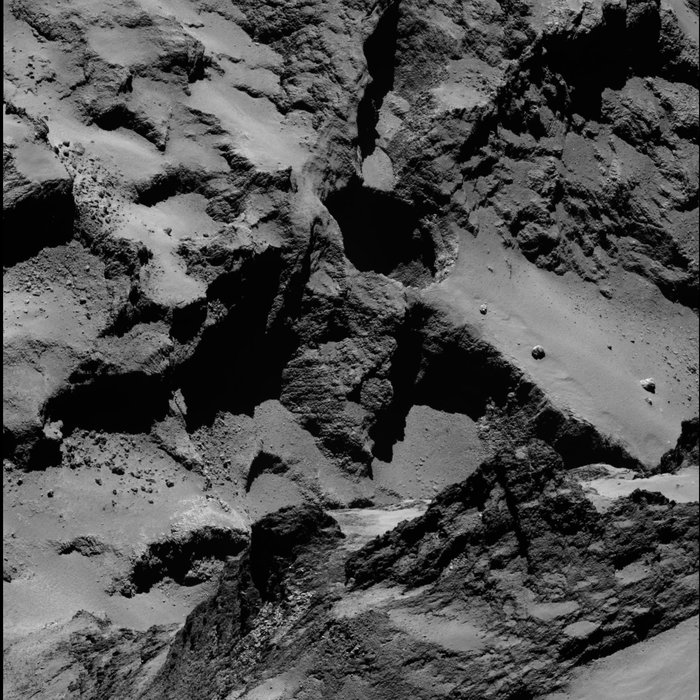A number of the dust jets emerging from Rosetta’s comet can be traced back to active pits that were likely formed by a sudden collapse of the surface. These ‘sinkholes’ are providing a glimpse at the chaotic and diverse interior of the comet.
Rosetta has been monitoring Comet 67P/Churyumov–Gerasimenko’s activity for over a year, watching how its halo of dust and gas grows as the comet moves closer to the Sun along its orbit.
From a distance of a few hundred kilometres, Rosetta observes an intricate pattern of the dust jets emitted from the nucleus as they stream out into space. But now, thanks to high-resolution images from the OSIRIS camera from distances of just 10–30 km from the comet centre last year, at least some of these dust jets can be traced back to specific locations on the surface, the first time this has ever been seen.

In a study reported today in the science journal Nature, 18 quasi-circular pits have been identified in the northern hemisphere of the comet, some of which are the source of continuing activity.
The pits are a few tens to a few hundreds of metres in diameter and extend up to 210 m below the surface to a smooth dust-covered floor. Material is seen to be streaming from the most active pits.
“We see jets arising from the fractured areas of the walls inside the pits. These fractures mean that volatiles trapped under the surface can be warmed more easily and subsequently escape into space,” says Jean-Baptiste Vincent from the Max Planck Institute for Solar System Research, lead author of the study.
Full report: http://www.esa.int/Our_Activities/Space_Science/Rosetta/Comet_sinkholes_generate_jets


